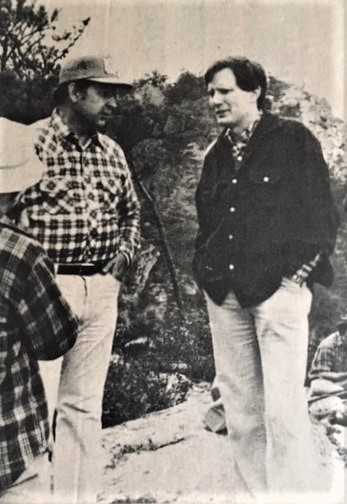This year, the North Carolina Sierra Club is celebrating its 50th anniversary as a separate chapter of the nation's oldest environmental advocacy organization.
As the year progresses, we'll occasionally share a story of some of the issues close to our - and your - hearts, those where we've had significant wins, those we are still fighting, and those that are just coming to light.
The following is a first-person account from Robbie Cox, a longtime Sierran who is also an emeritus professor at UNC's Department of Communications. Robbie's career with the Sierra Club included three stints as president of the national organization, in 1994-96, 2000-01, and 2007-08.
Robbie's early Sierra Club activism saw him play a pivotal role in the passage of the N.C. Wilderness Act of 1984. In this story, he tells how and why this issue is dear to him, and how Sierrans' advocacy was essential to its success.
Sierrans Force a Win for Wilderness
By Robbie Cox
 The moment I knew we finally had a chance for our NC wilderness bill came when arch-conservative Sen. Jesse Helms asked me, “How many members are in the Sierra Club’s North Carolina Chapter?” I told him, “Over 5,000."
The moment I knew we finally had a chance for our NC wilderness bill came when arch-conservative Sen. Jesse Helms asked me, “How many members are in the Sierra Club’s North Carolina Chapter?” I told him, “Over 5,000."
“Well,” he said, “I think each of them wrote to me three times!”
For years, Sierrans had been mapping the remaining wild areas in the Nantahala, Pisgah, Uwharrie and Croatan national forests and mobilizing supporters. And they were ready when the moment came - a hearing before Helms’ Senate Agriculture Committee in January 1984.
I became involved when I discovered the U.S. Forest Service was surveying these four national forests for future “multiple uses,” including logging. I listened to older Club activists who warned, “Decisions being made now will determine how much wilderness will be left for future generations.”
As a boy, I roamed forests near my home in West Virginia. My love of ancient oak trees, the Greenbriar River, and wildlife stayed with me. It was wandering in these forests that resonated with me when I heard warnings about the Forest Service survey.
Club volunteers had been identifying endangered species and photographing prospective wilderness areas in these forests.
I didn’t have their technical skills, and I wondered if I had anything to offer. Thinking my communication background might be useful, I created a slide presentation and began speaking and showing images of these amazing places to local groups across North Carolina. After each slide show, we gathered pledges to write and call when the time came.
A turning point came when former Chapter Chair Ann Taylor persuaded Joe Grimsley (at left in photo with Robbie), head of the state's Natural Resources agency, to come with me and other Sierrans for an overnight backpack trip in Harper Creek in the western mountains.
 We had proposed this rich ecosystem for protection under the N.C. wilderness bill. Joe was stunned by its beauty and later helped garner support from our state’s congressional delegation.
We had proposed this rich ecosystem for protection under the N.C. wilderness bill. Joe was stunned by its beauty and later helped garner support from our state’s congressional delegation.
Finally, the fate of the N.C. Wilderness Act lay in the Republican-controlled U.S. Senate. By the time of my testimony at a hearing before Senator Helms, action alerts had gone to Sierra Club members across the state.
Scores of Sierrans were writing to Helms - and it worked. He withdrew his opposition to the legislation, the bill passed the full Senate and, on June 19, 1984, President Reagan signed the N.C. Wilderness Act, which tripled the protected wilderness areas in our state’s four national forests.
As Robbie noted, Sierra Club volunteers were instrumental in helping pass the North Carolina Wilderness Act in 1984. It took thousands of folks who, like Robbie, had a connection to natural lands to work together to achieve a victory much larger than any one person could have accomplished alone.
We face a similar challenge today. And much like 36 years ago, success will depend on us working together.
The U.S. Forest Service is coordinating a revision plan for the Pisgah and Nantahala National Forests. We are building an online tool that will allow you to provide comments on this process that focuses on protecting wilderness, backcountry, old growth, and state heritage areas.
You can be a part of the campaign happening now to protect wilderness areas in North Carolina. Just as in 1984, we need your help to protect our public lands.